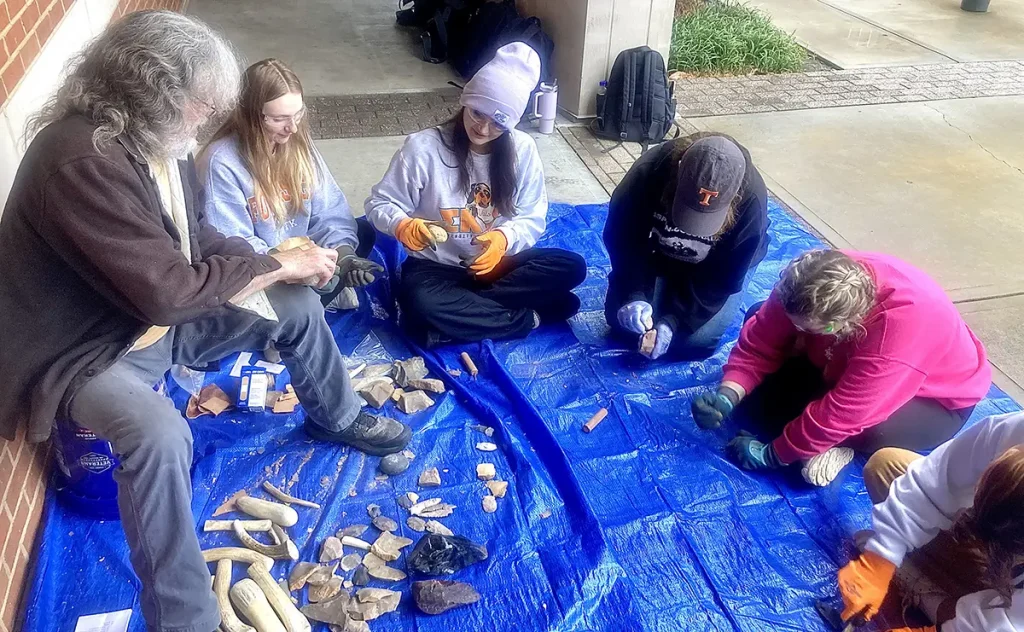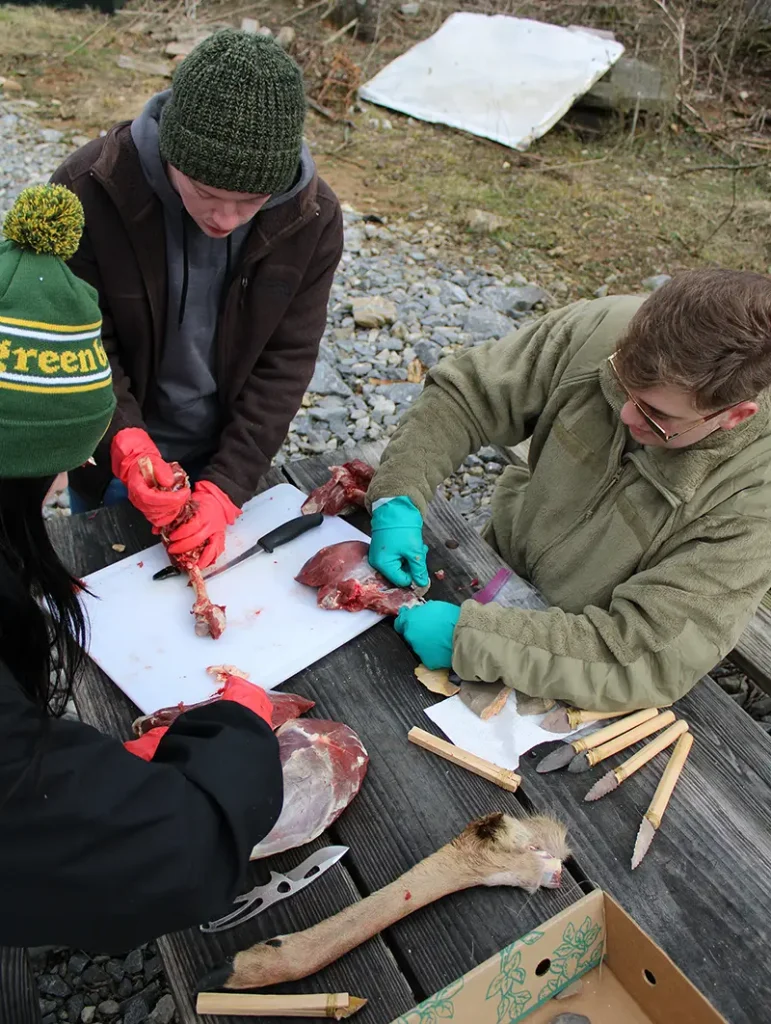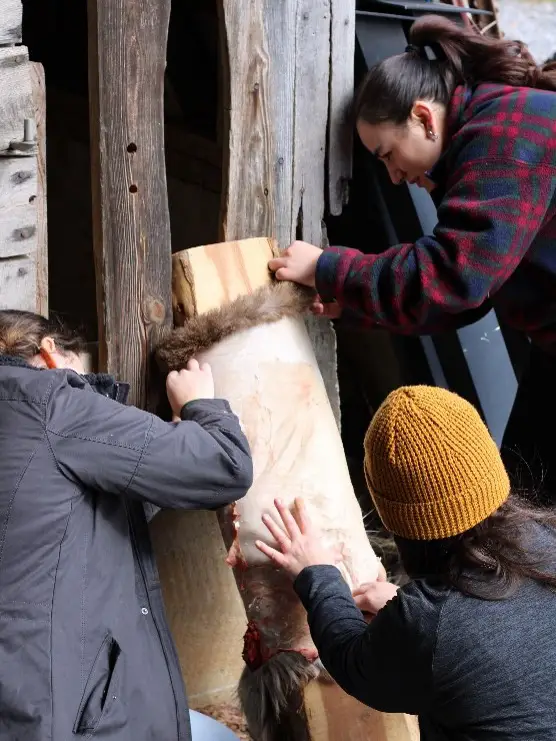Exploring the Past: Inside the Anthropology Department’s Experimental Archaeology Class

Have you ever thought about how ancient people made and used artifacts in the past? This semester, Sierra Bow is teaching a unique class centered on experimental archaeology, a dynamic field that connects theoretical concepts with practical experimentation. Through reconstructing and testing ancient methods and technologies, experimental archaeology serves as a vital bridge between theory and practice.
In this class, students do not merely learn about the past through examining material remains, but actively explore how dynamic human behaviors in the past led to the creation of static artifacts that archaeologists uncover today. Students also learn how to formulate research questions, conduct small-scale experiments, and publicly report on their findings.
A recent visit from Andrew Bradbury, a local archaeologist with Cultural Resource Analysts, Inc. (CRAI), has further enriched this hands-on approach. During his demonstration of flintknapping, students witnessed the process of crafting stone tools and were able to create their own, an experience that proved more challenging than many of them had anticipated.

After flintknapping, students had the chance to use their stone tools in a practical setting: butchering and processing deer. This unique opportunity arose through a partnership with a Tennessee State Park, which, as a part of an active management plan to mitigate deer overpopulation, had just completed a deer cull on park property. By using deer harvested as part of this management activity, class members accessed these resources without undue waste, adding sustainability and resourcefulness to their experience.
This collaboration underscores the importance of interdisciplinary partnerships in archaeological research and has provided course participants with a distinctive learning experience. Many students have planned their research projects with materials sourced from the deer. Some focused on distinguishing stone tool use-wear signatures on fresh and frozen meat, bone, and wood. Others chose to replicate bone artifacts like awls and fishhooks. One student has collected and burned long bones to test how bone black pigments are created, while another collected deer hides and brains to explore Native American tanning practices.

Students are also using a range of other materials and techniques for class projects. For example, two students intend to examine the production of hickory nut flour from harvested nuts, while concurrently analyzing the wear patterns on grinding stones employed in this procedure. Another student intends to replicate atlatl (spear thrower) weights and assess their impact on throwing velocity.
Throughout the semester, students will engage in many additional hands-on activities including processing local clays, hand-building pottery vessels, and, if the weather is nice, firing these vessels. Additionally, students will assist Kandi Hollenbach with planting the Southern Foodways Garden, gaining insights into the practical aspects of agricultural practices. Aaron Deter-Wolf, an archaeologist from the Tennessee Division of Archaeology, will share insights from his research on ancient tattooing practices later in the semester.
Through hands-on experimentation and collaboration with experts in the field, Sierra Bow’s Experimental Archaeology course offers students a unique opportunity to engage with the past in a meaningful and tangible way. Through the integration of theoretical knowledge with practical experience, students gain a deeper understanding of ancient cultures while honing valuable skills in critical thinking and scientific research methodologies. At the end of the semester, students will present their research in a public poster symposium held in the Anthropology Department.